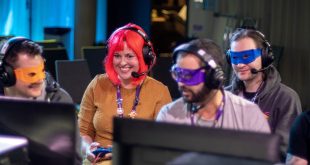Asmodee is arguably the world’s most important board game publisher. It merged with Fantasy Flight Games (Star Wars, Game of Thrones and Lord of the Rings titles) and Days of Wonder (responsible for Ticket to Ride and Small World) in recent years to create a gaming goliath. That gives its Asmodee Digital publishing arm an envious range of titles to choose from.
The original Lord of the Rings: The Card Game has set expansion packs of cards, rather than random packs as in a collectible card game such as Magic: The Gathering or Hearthstone. It’s also a co-operative game rather than a competitive one, which again makes it very different.
We talk to CMO Philippe Dao about the game and the process that fledgling developer Fantasy Flight Interactive went through to translate it for digital devices.
Why did you choose this game to convert?
Lord of the Rings is a timeless piece of fiction about very human, very flawed characters banding together to take on insurmountable odds. It’s a story that seems to only become more and more resonant as time goes by.
As for our game, there’s something about the idea of characters coming together to take down an evil bigger than themselves that speaks to the adventure card game model in an interesting way.
They’re about players working together to take down insurmountable odds. The LOTR narrative arc thematically lines up with the gameplay.
With something of an outcry over randomised loot boxes and card packs, is now a perfect time for a digital living card game (LCG)?
We shied away from random card packs because it didn’t make as much sense for our particular game structure. Because this game is focused on narrative campaigns rather than competitive play, we thought players would be more interested in pursuing strategies rather than building around the powerful cards they opened.
Furthermore, we want players to find reasons to approach each quest multiple times with new strategies and decks. A less random system for accessing the card pool allows players to build more unique decks.
As a co-operative title it’s very different from many fantasy card games – could that attract a different audience?
While we are making a card game, we’re not making a collectible card game (CCG) – we’re trying to do something a little different, focused less on competitive gameplay and more on co-operative.
Players are an intersectional and diverse bunch, and we want to appeal to all of them – from the hardcore Tolkien superfan to the CCG expert to the casual player. We think there’s something for everyone to enjoy in The Lord of the Rings Living Card Game.
We think this game has a low skill floor but a high skill ceiling. It’s fairly easy to pick up and play for the first time, but it still rewards creative and highly skilled play.
More generally, what are the sticking points when converting board or card games to digital?
It is a constant challenge! When adapting a board game to digital, you have multiple issues to overcome: not only the usual ones like the full adaptation of game design, the redesign of the user interface, the development of a multiplayer mode which is perfectly balanced, rethinking the game economy for some games – but also specific ones like providing high quality tutorials, creating a solo campaign mode to retain players, modifying a couple of rules of the physical game and so on.
In terms of sales, do the most successful physical games make the most successful digital ones?
We see an obvious correlation between the success of a tabletop game and its digital adaptation for most of our games.
Moreover we have seen many times a virtuous circle between physical and digital: after the launch of a digital adaptation, we always see a resurgence in interest in the tabletop game. And this applies for The Lord of the Rings Living Card Game too.
Longtime players have started migrating over to digital platforms to prepare for the game’s release. We’re already seeing this convergence and crossover between the tabletop and digital games and their respective communities.

 MCV/DEVELOP News, events, research and jobs from the games industry
MCV/DEVELOP News, events, research and jobs from the games industry




